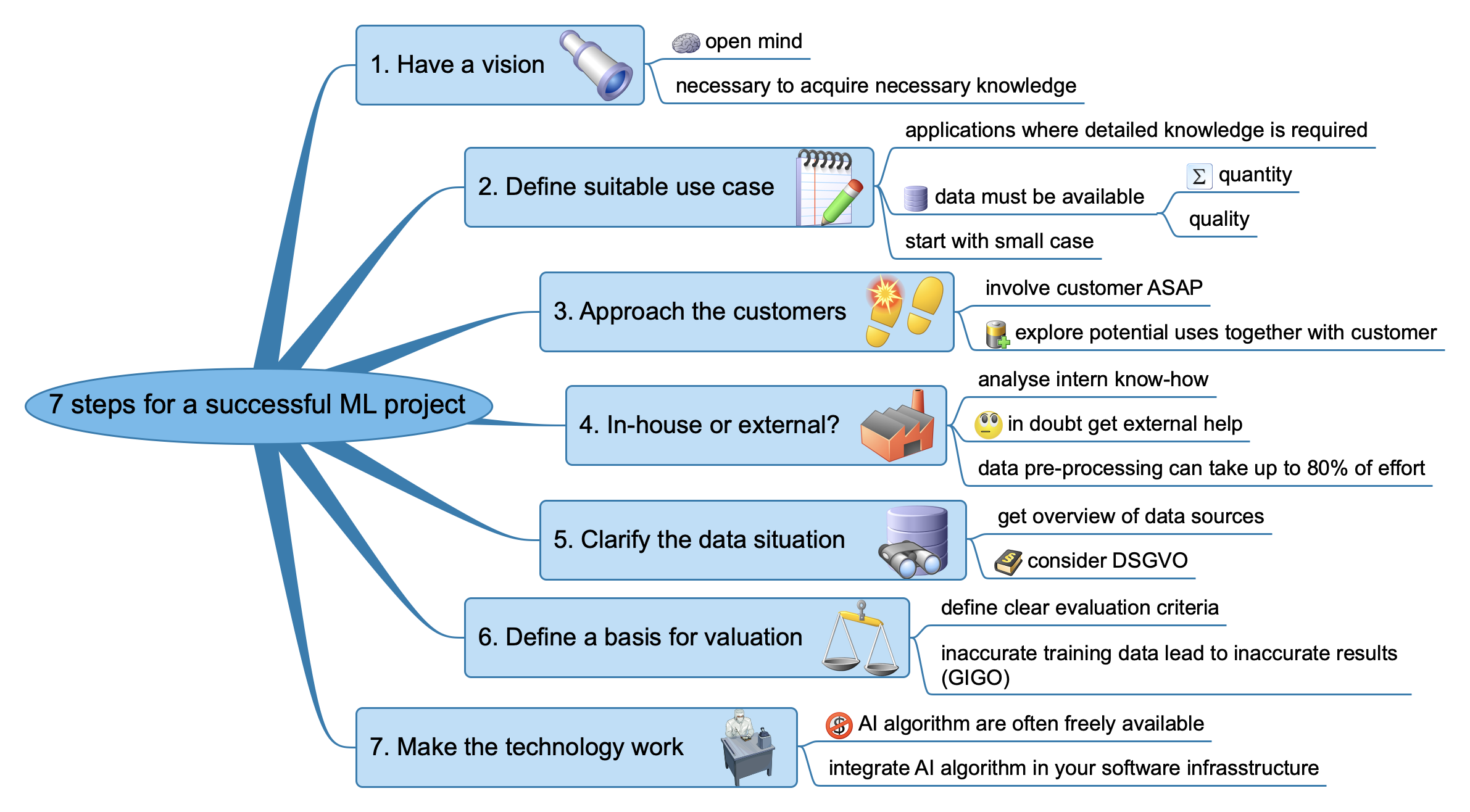5.2 Management ML strategy: 7 steps for a successful ML project
This strategy was presented by MachinenMarkt https://www.maschinenmarkt.vogel.de/kuenstliche-intelligenz-ki-einfach-erklaert-beispiele-anwendungen-a-839104/.
A mind map gives an overview of the strategy, the following text goes further into details.

Management ML strategy: 7 steps for a successful ML project, figure based on https://www.maschinenmarkt.vogel.de/kuenstliche-intelligenz-ki-einfach-erklaert-beispiele-anwendungen-a-839104/
Have a vision
An open mindset is important to acquire the necessary knowledge and understand the context of upcoming questions in production.Define suitable use case
Ideal for AI projects are applications where detailed knowledge is required. Important: For this purpose, data must be available to you in sufficient quantity and quality. It is best to start with a small dimensioned case.Approach the customers
Get your customers on board as soon as possible! You shouldn’t wait for them to come to you. Show initiative and explore potential uses for AI projects together with these customers.In-house or external?
Analyse your know-how in relation to the concrete application. If you do not have your own data specialist, you should seek external support. Take the time to make your choice, ask around and trust in recommendations: The necessary preparation of the data often accounts for up to 80% of the entire project. You should only work with the best.Clarify the data situation
Get an overview of your data sources. Create a data map that records where and in what form company data is stored. Note: Any algorithm is only as good as its data basis. It is also important to clarify your obligations regarding personal data. Violations of the DSGVO quickly become expensive.Define a basis for valuation
In industry, you are used to quantitative statements in particular - for example in measurement and production systems. However, the field of machine learning is also based on human impressions and experiences, i.e. on subjective and qualitative parameters. For your learning data this means: Define clear evaluation criteria, for example “good / bad” or “valid / not valid”. Inaccurate learning data lead to an inaccurate result of artificial intelligence.Make the technology work
Import your data into the software now. The AI algorithms are usually freely available. You can find them as open source at cloud providers or on platforms like Github. Transfer the learned AI application to the process computer of your machine now. If your machine is older and does not yet have an industrial computer Retrofit it.